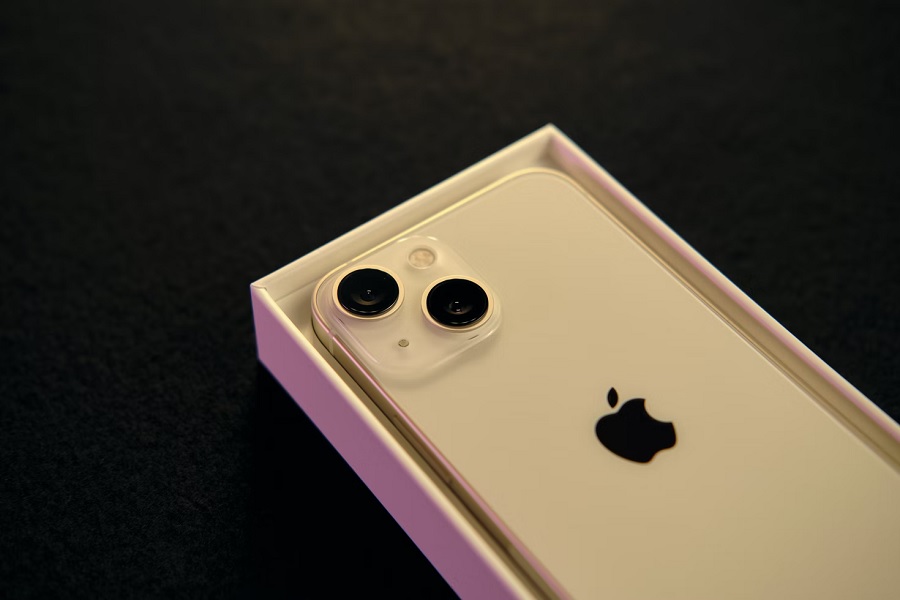Apple's latest iPhone generation has seen the biggest quarterly sales in the United States in several years, the Consumer Intelligence Research Partners (CIRP) reports. However, the iPhone 13 mini saw a similar performance to its predecessor after accounting for only 3 percent of the sales in the same period.
The research firm reported that in the March 2022 quarter, the four-device lineup of iPhone 13 accounted for 71 percent of iPhone sales in the U.S. In comparison, only 61 percent of the overall iPhone sales in the region were from the iPhone 12 series in the same quarter last year.
CIRP also noted that the standard iPhone 13 became the best-selling model out of all Apple smartphones in several years, accounting for 38 percent of the sales in the last quarter. This is a major jump from the iPhone 12’s performance for the same period in 2021, which only accounted for 22 percent of the total iPhone sales.
Last year, there were several reports noting the iPhone 12 mini’s lower-than-expected demand. Apple reportedly halted its production earlier than planned due to low sales, and it appears that the same trend is happening for the iPhone 13 mini. CIRP said both the iPhone 12 mini and iPhone 13 mini only accounted for 3 percent of sales for the same period.
The list of changes in terms of technical specifications and features between the iPhone 12 and iPhone 13 series is not that long. But the latest iPhone generation shipped with some notable upgrades. Apple finally brought its ProMotion technology to its flagship smartphones, giving the iPhone 13 Pro and iPhone 13 Pro Max display up to 120Hz refresh rate. Apple also added the sensor-shift OIS feature to both Pro models last year, while it was only exclusively available on the iPhone 12 Pro Max in 2020.
However, these upgrades are not the only reasons for the increased sales of the iPhone 13 series. CIRP noted that consumers are keeping their existing phones for a shorter period and are purchasing new phones sooner.
“In the past year the age of the old phone declined steadily, and now only about 20% of buyers had their previous phone for three years or longer,” CIRP co-founder Mike Levin explained. “Since the market shifted to unsubsidized phone sales on installment contracts, the age of old phones climbed as owners enjoyed using their paid-for phones. Recently that trend reversed, perhaps as options for trading-in high value used phones continued to improve.”
Photo by Quinn Battick on Unsplash



 U.S. Greenlights Nvidia H200 Chip Exports to China With 25% Fee
U.S. Greenlights Nvidia H200 Chip Exports to China With 25% Fee  Trump Criticizes EU’s €120 Million Fine on Elon Musk’s X Platform
Trump Criticizes EU’s €120 Million Fine on Elon Musk’s X Platform  Nvidia Weighs Expanding H200 AI Chip Production as China Demand Surges
Nvidia Weighs Expanding H200 AI Chip Production as China Demand Surges  SK Hynix Shares Surge on Hopes for Upcoming ADR Issuance
SK Hynix Shares Surge on Hopes for Upcoming ADR Issuance  IBM Nears $11 Billion Deal to Acquire Confluent in Major AI and Data Push
IBM Nears $11 Billion Deal to Acquire Confluent in Major AI and Data Push  SK Hynix Labeled “Investment Warning Stock” After Extraordinary 200% Share Surge
SK Hynix Labeled “Investment Warning Stock” After Extraordinary 200% Share Surge  Evercore Reaffirms Alphabet’s Search Dominance as AI Competition Intensifies
Evercore Reaffirms Alphabet’s Search Dominance as AI Competition Intensifies  US Charges Two Men in Alleged Nvidia Chip Smuggling Scheme to China
US Charges Two Men in Alleged Nvidia Chip Smuggling Scheme to China  Moore Threads Stock Slides After Risk Warning Despite 600% Surge Since IPO
Moore Threads Stock Slides After Risk Warning Despite 600% Surge Since IPO  Adobe Strengthens AI Strategy Ahead of Q4 Earnings, Says Stifel
Adobe Strengthens AI Strategy Ahead of Q4 Earnings, Says Stifel  SpaceX Begins IPO Preparations as Wall Street Banks Line Up for Advisory Roles
SpaceX Begins IPO Preparations as Wall Street Banks Line Up for Advisory Roles  SK Hynix Considers U.S. ADR Listing to Boost Shareholder Value Amid Rising AI Chip Demand
SK Hynix Considers U.S. ADR Listing to Boost Shareholder Value Amid Rising AI Chip Demand  iRobot Files for Chapter 11 Bankruptcy Amid Rising Competition and Tariff Pressures
iRobot Files for Chapter 11 Bankruptcy Amid Rising Competition and Tariff Pressures  Apple App Store Injunction Largely Upheld as Appeals Court Rules on Epic Games Case
Apple App Store Injunction Largely Upheld as Appeals Court Rules on Epic Games Case  Intel’s Testing of China-Linked Chipmaking Tools Raises U.S. National Security Concerns
Intel’s Testing of China-Linked Chipmaking Tools Raises U.S. National Security Concerns 































